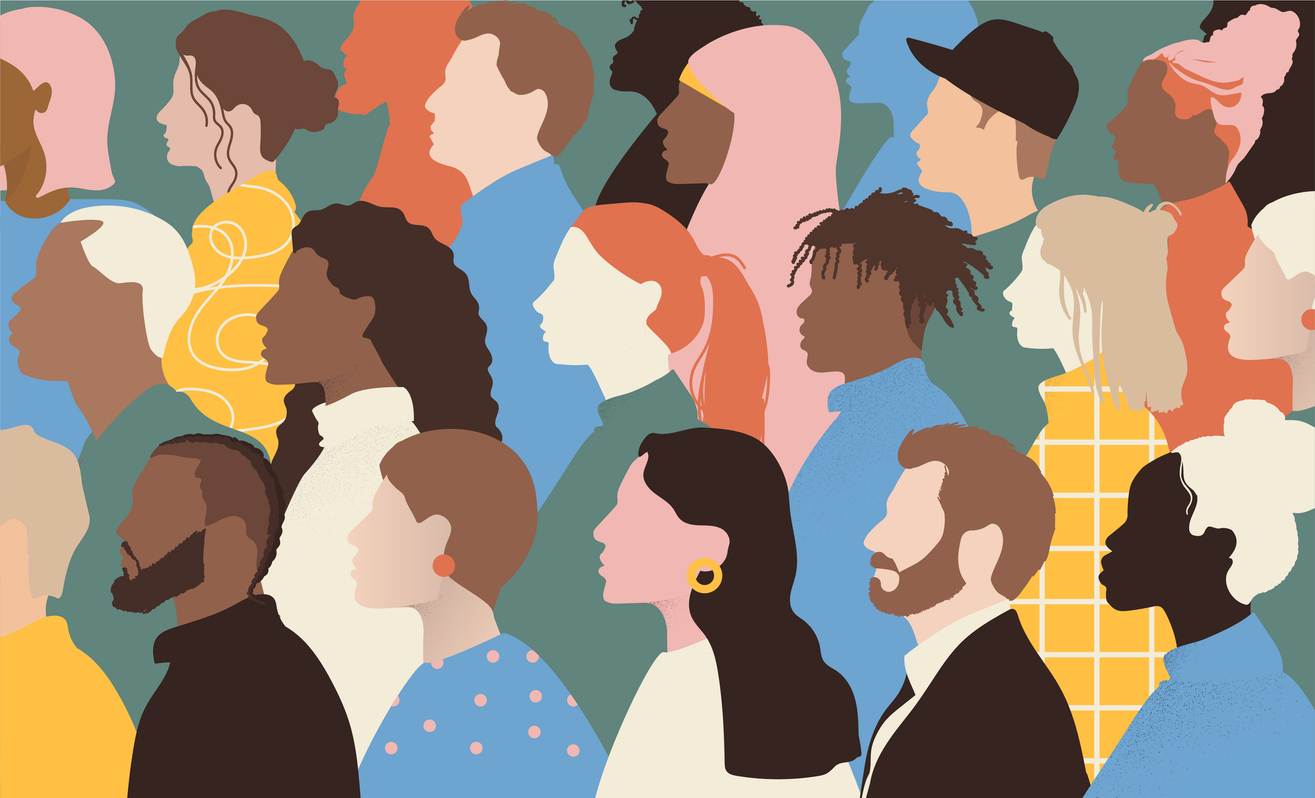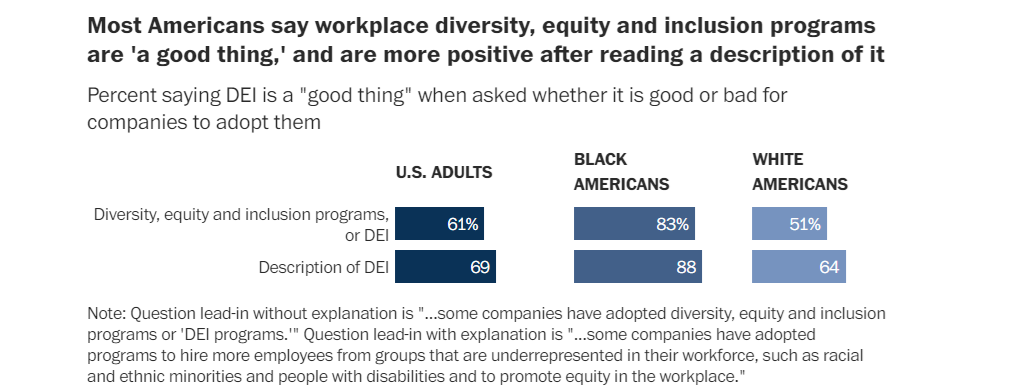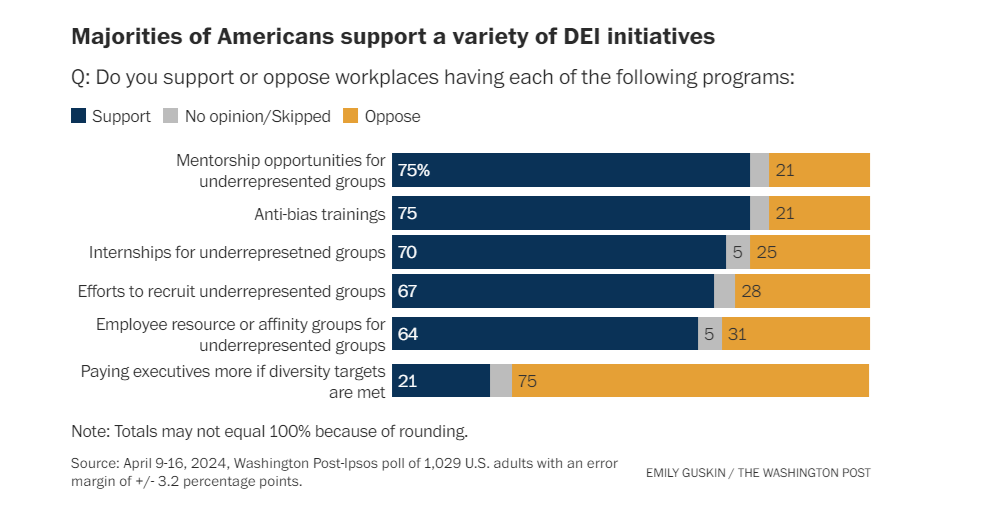By the Numbers: What average Americans really think of DE&I efforts
The more the programs are explained, the more people like them.

Diversity, equity and inclusion feels under siege from every direction. Programs must be recalibrated to comply with Supreme Court rulings, conservative attorneys general have sent warnings to companies and more laws are proposed each week that would curtail the ability of both government and businesses to offer various kinds of DE&I programming.
Yet when you ask normal, everyday Americans what they think about diversity initiatives, most are broadly in favor, according to a new Washington Post-Ipsos poll.
Of the 2,274 Americans surveyed, including 1,371 workers, 61% said that corporate diversity, equity and inclusion programs were good. These numbers were highest among Black Americans (82%) and lower among white people (51%).
But something interesting happens when you give people more information about what DE&I actually means.
When the question was posed instead as: “…some companies have adopted programs to hire more employees from groups that are underrepresented in their workforce, such as racial and ethnic minorities and people with disabilities and to promote equity in the workplace,” the respondents who supported such programs rose to 69% overall, 88% among Black Americans and 64% among white Americans.
Those are significant jumps, simply by taking the time to explain the goal of DE&I rather than rattling off an acronym.

Overall, respondents said that DE&I programs were most likely to benefit people with disabilities (63%), Black workers (58%), Hispanic workers (55%), LGBTQ+ people (54%) and women (52%).
The majority of people said that DE&I programs neither helped nor hurt them personally (57%), while 23% and 27%, respectively, said that these programs hurt men and white people.
Again, we see a racial split in that last number: 34% of white respondents said the programs hurt white people, though the majority of that racial demographic still find DE&I programs either positive or neutral for people like them.
The poll also found that there is widespread support across races for most DE&I initiatives, with mentorship programs and anti-bias training the most popular.
But respondents widely criticized one item: : bonuses for executives who hit diversity targets. Some companies have already begun to move away from this metric for executive bonuses, most notably Starbucks.

Now, it’s difficult to know precisely how to read that question. It could be more an economic answer, with fewer people supporting higher pay for executives, period, at a time when their compensation is soaring high above that of the average worker. Or it could be that the perception of hiring “quotas” based on demographic characteristics rubs people the wrong way. The survey can’t tell us that level of detail.
However, it does offer some intriguing insights for communicators tasked with creating messaging around these programs.
What it means for communicators
As we reported in a past edition of By the Numbers, Fortune 100 companies are shifting away from the use of the acronym “DE&I.” And this poll shows that they might have good reasons besides the political climate alone.
The finding that slowing down and taking the time to explain the why behind diversity initiatives increases positivity by a solid margin should make every communicator stop and take notice.
It isn’t enough to simply tell people what is being done. It’s a communicator’s role to explain the why and how and tie those messages into your organization’s overall mission.
This same logic applies whether the communication is to internal or external audiences. Moving beyond a buzzword — and no matter how noble its aims, DE&I has become a buzzword, and a weaponized one at that — and adding a simple sentence of context and explanation can make all the difference.
But that can be easier said than done sometimes. Communicators constantly feel as though they’re competing for attention, that everything must be cut down to the smallest number of characters possible and be communicated for ever-shrinking attention spans.
Yet this survey shows that hearts and minds can be changed by simply slowing down. Giving background. Not assuming that everyone is on the same page and coming from the same place.
Because that’s what diversity means, isn’t it? Bringing together a group of people who may have nothing in common on the surface, but connecting them through shared mission and vision.
The ideals that drove the DE&I movement remain popular. But language must evolve — and must go deeper.
Allison Carter is editor-in-chief of PR Daily. Follow her on X or LinkedIn.







